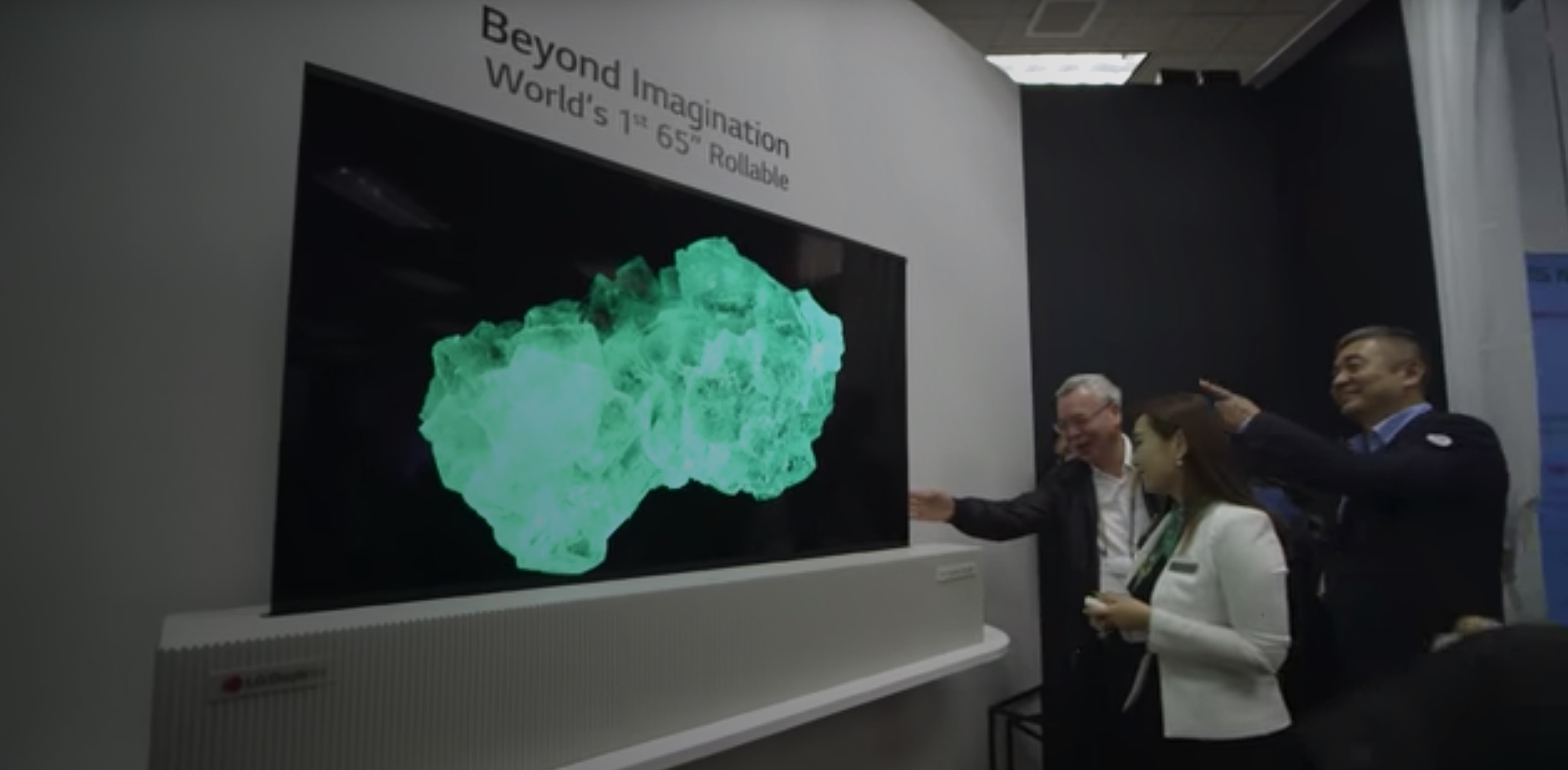Architizer’s Tech Directory is a database of tech tools for architects — from the latest generative design and AI to rendering and visualization, 3D modeling, project management and many more. Explore the complete library of categories here.
For the last 50 years or so, space planning in residential architecture has revolved certain “essential” pieces of furniture electronic appliances. In the kitchen, architects have to create space for ovens, microwaves, dishwashers and washing machines. In the living room, the couch and the TV are staples. The latter of these has grown ever larger in recent times, and has therefore needed an increasing amount of blank wall space dedicated to it. That could all be about to change, thanks to new innovations in OLED screen technology.
At CES 2018, LG unveiled a 65-inch, rollable OLED screen that is astonishingly thin and incredibly flexible. The display can be rolled down into a box a fraction of its original size, raising the possibility of living rooms free from ever-present flat screen televisions in the future. Check out the video from CES 2018 below:
LG’s demonstration is not without precedent. Samsung — winner of Product of the Year at the 2016 A+Awards — unveiled an intriguing prototype for a rollable display at SID 2016 in San Francisco. The technology giant demonstrated a much smaller OLED screen that was flexible enough to be rolled up and stored in a cylinder, much like architects’ blueprints of old.
Numerous patents have been submitted by Samsung in the past, including pull-out screens and folding displays that mimic a book. Nonetheless, given LG’s recent development, it looks like the broad concept of the rollable screen is fast approaching the mainstream.

Samsung display patents; via phoneArena.com
While LG’s screen wows in terms of size and clarity — its 65 inch display boasts full 4k resolution — Samsung’s original prototype remains compelling given its compactness. As SlashGear reported at the time, “Its party trick is how small it gets. The screen rolls up into a small metal stick, roughly the diameter of an old canister of 35mm film.”
The slimline nature of the technology could make it an ideal alternative to tablets for architects and contractors, who often have to contend with detailed construction documents comprising hundreds of large-format drawings. It could theoretically spell the end of unwieldy folders stuffed with huge pieces of paper, benefitting the environment as well as project managers across the globe.

Via SlashGear
There are, of course, a number of limitations to the prototypes at this stage, meaning they have some way to go before becoming commercially viable. The display is externally powered, limiting the portability of the rollable screen despite its slim-line dimensions.
Further to this, it is not yet clear exactly how many ‘rolls’ the OLED could handle before it becomes vulnerable to distortion or cracking. In the world of the architect, the reliability of good, old-fashioned paper will still win out in this respect — at least for now.

Via SlashGear
Still, the possibilities are undeniably intriguing. Would you replace your television — or even your drawing tube — with a rollable display in the future? Let us know over on Facebook.
Architizer’s Tech Directory is a database of tech tools for architects — from the latest generative design and AI to rendering and visualization, 3D modeling, project management and many more. Explore the complete library of categories here.




